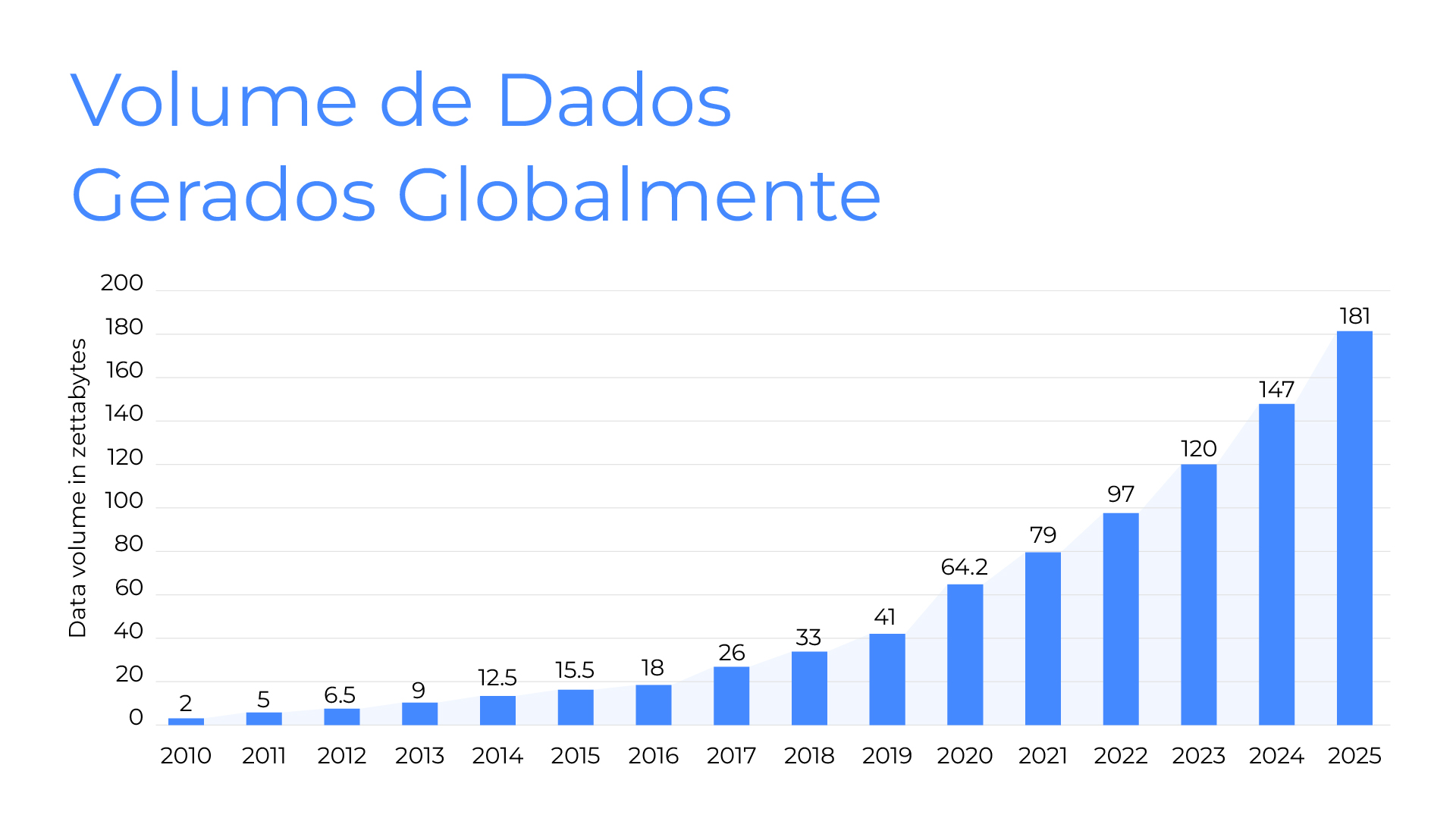The concept of Data-Informed Decisions applied to the environmental context
The phrase “Datais the new oil“, uttered by British mathematician Clive Humby, is widespread among data science professionals. But the second part of his speech, which is less well known, contains a detail that changes our entire relationship with this resource: “They are valuable, but if they are not refined, they cannot be used”.
In fact, according to Statista, a global data and market intelligence company, it is predicted that more than 180 zetabytes (or more than 200 sextillion bytes) of data will be generated by 2025. This information is generated through social networks and browsing websites and apps, but it also comes from monitoring tools used by industries, research centers, universities, governments and others. How do you organize, filter, interpret and use such a large volume of content?
How is (or should) data be used in the environmental field?
More specifically in the environmental field, the main data generated refers to air, water and soil monitoring, industrial waste management, investigation of contaminated areas, among others. Once processed, this information is mainly used to acquire operating licenses, feed sustainability reports and report to environmental agencies. And this is where great opportunities are missed.
Data management shouldn’t just be about responding to demands from investors and environmental agencies. To give you an idea, more than 200,000 environmental lawsuits are underway in Brazil, with fines and compensation ranging from thousands to billions of reais. In this scenario, intelligent management should use data in particular to manage risks and prevent disasters.
A lack of insight into data can have devastating consequences:
- Governance problems and violation of environmental regulations
- Waste of resources
- Damage to reputation
- Financial losses could run into the billions in fines, compensation and legal costs.
The biggest difficulties in data management
As I said at the beginning of this text, raw data, like crude oil, is impossible to use. These are the biggest challenges facing governments and corporations:
- Difficulty analyzing a high volume of data
- Inaccurate or low-quality data
- Variety of formats that do not allow a unified analysis
- Lack of data-informed decision-making culture
- Inefficient communication between the different sectors involved
Data science enabling the right decisions
It is impossible to extract any understanding from such a large volume of content (better known as Big Data) if it is not minimally systematized in order to cleanse the data, identify patterns and anomalies, validate it and create graphic visualizations in order to then interpret it and extract useful information from it. That’s why data science is essential if you really want to be able to draw conclusions and make decisions based on data.
These are called Data-Informed Decision Making(DIDM). In environmental management, they allow for more efficient projects, executed in less time and at lower costs. They also optimize the management of contaminated areas and provide technical support in cases of litigation and disagreements.
There are geographic information systems (GIS) on the market that help professionals monitor various indicators. One of them is EnviroAsset, produced by the team at NewFields Brasil. The platform has a user-friendly interface and a Data Science team that organizes and prepares environmental data so that it can be visualized and analyzed accurately.
To find out more about the platform and what it can do for your company, contact our team.

